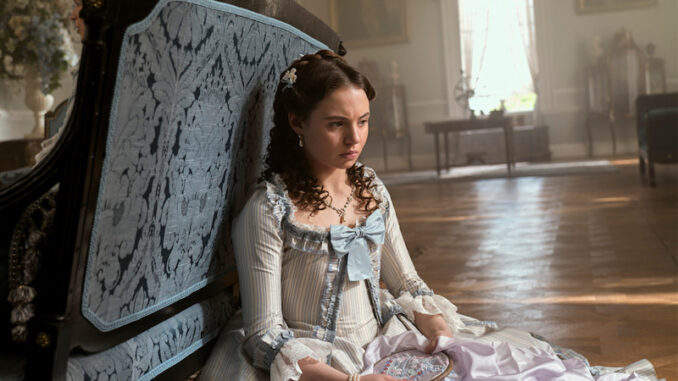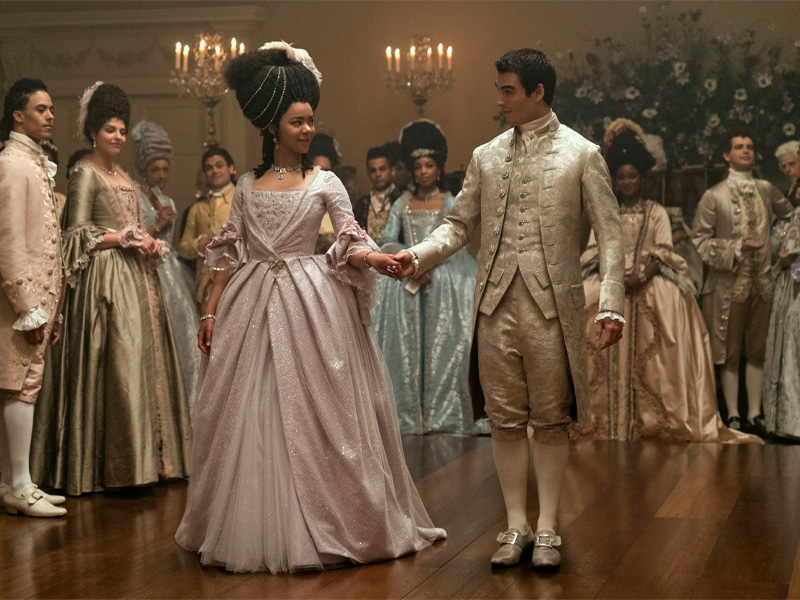
In 2020, the film “Bridgerton” once made waves across film forums and became one of Netflix’s most popular series. The prequel “Queen Charlotte: A Bridgerton Story” naturally received a lot of attention from the public right from the first days of announcing the project. While some viewers predicted that the story would only mention a few romantic relationships, the film, in fact, far exceeded those expectations by focusing on exploring deeper and darker themes.
This is the story of the young Queen’s marriage to King George III, which is both an excellent love story and an important hierarchical change, creating the upper class society inherited by the characters in “Bridgerton”. Each character’s unique perspective, appropriate solutions to issues such as racism, isolation, coping with loss, etc. have resonated with audiences. It is not surprising that the film debuted at No. 1 in “Top most watched shows on Netflix” from May 1-7 with 148.28 million hours watched.
So what is it about “Queen Charlotte: A Bridgerton Story” that makes “cinema worms” so fascinated?
The appeal of untold stories
Romantic stories about the Regency period often revolve around the journey of young people entering high society, as they search for love, ignoring the experiences of their aunts and mothers. The challenges of women in marriage, losing their partners and wanting to love again are rarely explored. Writer Shonda Rhimes skillfully brings these untold stories to light, revealing the struggles and desires of an entire generation of women.
These upper-class women were not only conformists, but also bleeding hearts and yearning for love just as much as their younger counterparts. Lady Danbury’s story is a prime example of the challenges of living a solitary life as a woman unattached to a man in that era. And there is another untold story – Brimsley’s love story – that is equally poignant and worthy of attention. Devoted to serving the Queen, he never had the chance to have a family of his own, becoming a lonely man who danced alone.
The Dark Side of Middle-Aged Upper-Class Ladies
In “Bridgerton,” older upper-class women are often portrayed as scheming, gossiping about scandals or throwing parties, but “Queen Charlotte” delves into the lives of these women, beyond the confines of high society. They lie awake at night in their cold, large beds, mourning their loss, and yearning for love and warmth. Viscountess Violet, Lady Danbury, and Queen Charlotte all share experiences of loss and the challenges they face as women try to keep their lives together.

Just as Queen Charlotte was kept in the dark about the King’s illness, Lady Danbury was kept in the dark about her husband’s finances and affairs. They were treated as little more than “tools” to bear and care for children. Lady Danbury admits that she would not know how to breathe if it were not the air breathed by Lord Danbury. This detail highlights how little control she has over her life as a woman.
When Women Take Power
When the backstories of these women are finally revealed, it is easy to sympathize with them as they begin to seek control over their lives. While Lady Danbury’s relationship with Lord Ledger may be seen as wrong, it is still satisfying to see her experience the feelings she was denied in her loveless marriage.
Likewise, it is heartening to see the young Queen Charlotte take control the moment she frees her husband from the chains of the doctor. These women finally stand up, take responsibility for themselves, and realize how strong they can be. Power is evident as Charlotte stands up to Princess Augusta, just as Lady Danbury begins her fight to establish a lasting place for herself in high society.
